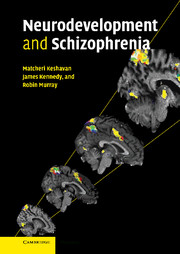Book contents
- Frontmatter
- Contents
- List of contributors
- Foreword
- Preface
- Part I Basic aspects
- Part II Etiological factors
- Part III Pathophysiology
- Part IV Clinical implications
- 22 Can one identify preschizophrenia children?
- 23 High-risk studies, brain development, and schizophrenia
- 24 Developmental models and hypothesis-driven early interventions in schizophrenia
- Index
- Plate section
- References
22 - Can one identify preschizophrenia children?
Published online by Cambridge University Press: 04 August 2010
- Frontmatter
- Contents
- List of contributors
- Foreword
- Preface
- Part I Basic aspects
- Part II Etiological factors
- Part III Pathophysiology
- Part IV Clinical implications
- 22 Can one identify preschizophrenia children?
- 23 High-risk studies, brain development, and schizophrenia
- 24 Developmental models and hypothesis-driven early interventions in schizophrenia
- Index
- Plate section
- References
Summary
Keywords
- Type
- Chapter
- Information
- Neurodevelopment and Schizophrenia , pp. 415 - 431Publisher: Cambridge University PressPrint publication year: 2004



